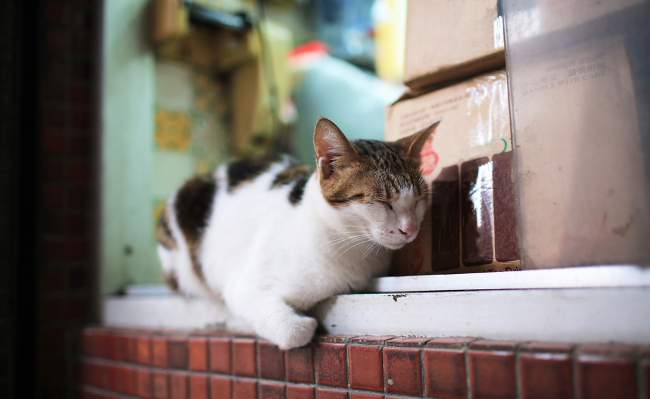
In most cities, keeping a cat on the premises of a convenience store is illegal and a health code violation. It’s also a proud tradition, particularly in New York City. So much so that when a woman posted a negative review complaining of a bodega cat, the internet’s retribution was swift and harsh. And, also, oddly, productive: A petition demanding “amnesty” for bodega cats has been circulating and even becoming popular. But the bodega cat isn’t just a cute pet. In fact, it’s part of a long-standing tradition that dates back centuries in human history.
You gotta be a miserable gentrifying ass bitch to yelp about the bodega cat pic.twitter.com/rinaytDanY
— Lisan Al-Fahgee (@SynKami) October 24, 2016
The cat has been a companion, or at least a begrudging roommate, for humans for ten centuries. Genetic tests have found that the domestic cat split off from an Asian wildcat in about 8,000 BCE, and while the fuzzy little guys were undeniably cute and beloved, they were also recruited for a job. The common housecat has been working pest control since at least 3000 BCE. A boat would rarely touch the water without a ship’s cat on board to control mice and rats.
Some of this is just the natural order of things. In the wild, cats feed on rodents and small animals. In fact, cats are a little too good at their jobs; a recent paper found that the domestic cat is, as far as anything smaller than it is concerned, a fur-covered killing machine that can wipe out entire species, which explains why some countries are trying to exterminate feral cats.
Other animals have taken note: Small rodents like mice will actively avoid any area they smell cat in, especially the distinctive bouquet of cat pee. While cats can’t kill every single rodent that appears, they can drive down the overall population, and keep an appearance from becoming an infestation.
When it comes to food (particularly food stored in cellars, as we often see in NYC), that can prove crucial. Some estimates peg losses in the food industry due to pests at nearly $2 billion. Furthermore, the other options are less than palatable when it comes to food. Poison is the most effective, yet rats and mice are notoriously hard to poison with bait because they don’t eat unknown food. Furthermore, poisons are, well, poisons. Even the two rodenticides allowed by organic practices are staggeringly nasty customers; one of them, sulfur dioxide, is essentially the dry form of sulfuric acid. They’re dangerous to handle, dangerous to be around, and certainly dangerous near things you eat.
None of this is meant to downplay the fact that cats come with their own set of problems. It’s estimated by the Asthma and Allergy Foundation of America that a third of Americans are allergic to cats, and children are more likely to be allergic. And it’s fair of the allergic to ask why they have to pop a Claritin just to buy a six-pack or grab a quick sandwich. Besides that, many house cats go feral, and it’s the feral cats that are particularly destructive to bird populations. It’s currently estimated that a billion birds per year are killed by feral cats.
Still, bodega owners have made it abundantly clear that they’d rather pay the thousands in potential fines, than to give up their pets and rely on poison. And it’s hard to blame them: Cats are good at their jobs and have history on their side. Both ancient history and longstanding history in New York.
For now, the tradition of cats as pest control seems likely to stay in place.






